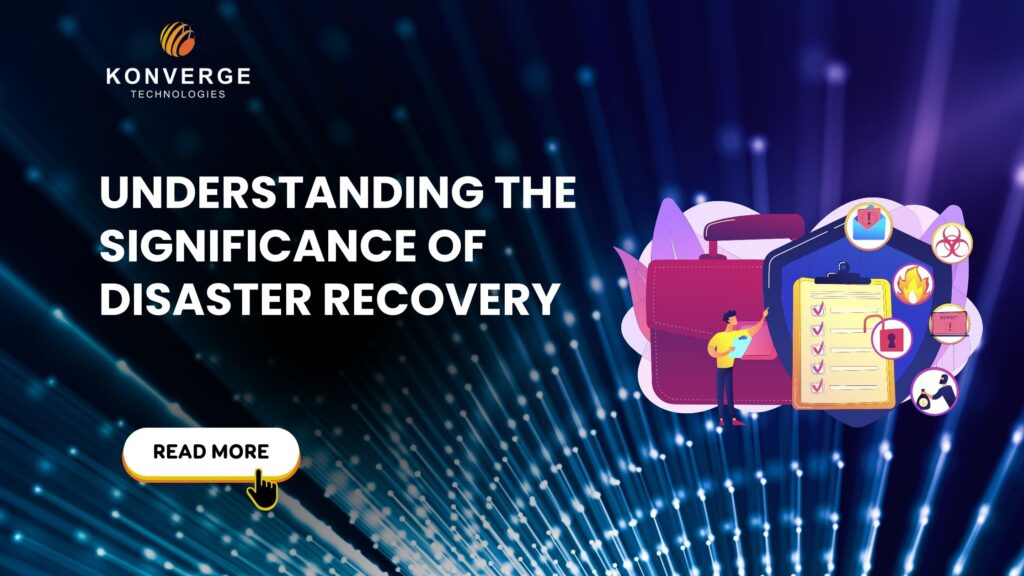
Understanding the Significance of Disaster Recovery

In today’s digitally-driven world, where businesses rely heavily on technology and data to drive operations, the concept of disaster recovery plays a pivotal role in ensuring continuity and resilience. From unforeseen natural disasters to malicious cyber-attacks, the potential threats to business operations are diverse and ever-present. In this comprehensive guide, we delve deeper into the intricacies of disaster recovery, exploring its importance, key elements, best practices, and innovative solutions like Disaster Recovery as a Service (DRaaS).
What is Disaster Recovery?
Disaster recovery is a proactive approach to mitigating the impact of unforeseen events that could disrupt normal business operations. These events encompass a wide range of scenarios, including natural disasters like earthquakes and hurricanes, technological failures such as power outages or equipment malfunctions, and malicious cyber-attacks by hackers. The primary objective of disaster recovery is to minimize downtime, prevent data loss, and ensure the continuity of critical business functions.
How Does Disaster Recovery Work?
At its core, disaster recovery involves the implementation of strategies and technologies aimed at swiftly restoring critical systems and data in the aftermath of a disaster. This could entail deploying backup solutions, replicating data to off-site locations, and establishing failover mechanisms to ensure uninterrupted operations. By leveraging a combination of preventive measures and reactive strategies, organizations can effectively mitigate the impact of disasters and safeguard their business continuity.
Why is Disaster Recovery Important?
The importance of disaster recovery cannot be overstated, particularly in today’s dynamic business environment where downtime can have severe repercussions. By having a robust disaster recovery plan in place, organizations can minimize financial losses, protect their brand reputation, and maintain customer satisfaction. In addition to mitigating risks, disaster recovery also fosters resilience and adaptability, enabling businesses to navigate unforeseen challenges and emerge stronger in the face of adversity.
Benefits of Disaster Recovery
The benefits of disaster recovery extend far beyond mere risk mitigation. Implementing a comprehensive disaster recovery strategy offers tangible advantages that contribute to long-term business success. These benefits include:
- Cost efficiency: Investing in disaster recovery upfront can yield significant cost savings by minimizing the financial impact of prolonged downtime and data loss.
- Increased productivity: By ensuring rapid recovery and minimal disruption, businesses can maintain productivity levels and avoid revenue losses associated with downtime.
- Enhanced security: Disaster recovery measures, including data encryption and secure backup solutions, bolster cybersecurity defenses and protect sensitive information from unauthorized access.
What is a Disaster Recovery Plan?
A disaster recovery plan (DRP) is a formal document that outlines the procedures and protocols for responding to various disaster scenarios. This includes identifying critical systems and data, establishing recovery objectives, and defining the roles and responsibilities of key personnel. A well-defined disaster recovery plan serves as a roadmap for navigating crises, enabling organizations to effectively mitigate risks and minimize the impact of disruptions on business operations.
Key Elements of a Disaster Recovery Plan
A robust disaster recovery plan typically includes several key elements designed to ensure comprehensive coverage and effective response to disasters. These elements may vary depending on the organization’s size, industry, and specific requirements but commonly include:
- Vulnerability assessment and risk analysis: Identifying potential threats and assessing their impact on business operations.
- Business impact analysis (BIA): Quantifying the impact of disruptions on critical business functions and prioritizing recovery efforts accordingly.
- Recovery objectives and strategies: Establishing recovery time objectives (RTOs) and recovery point objectives (RPOs) to guide recovery efforts and minimize downtime.
- Backup and restoration procedures: Implementing backup solutions and data replication strategies to ensure data accessibility and integrity.
- Testing and maintenance protocols: Regularly testing the disaster recovery plan and updating it as needed to ensure its effectiveness in real-world scenarios.
Best Disaster Recovery Methods
While the specific methods may vary depending on the organization’s needs and infrastructure, some common disaster recovery methods include:
- Data backup and replication: Storing backup copies of data in secure off-site locations to ensure data accessibility and integrity in the event of a disaster.
- Cloud-based disaster recovery: Leveraging cloud infrastructure and services to replicate critical systems and data, providing scalable and cost-effective disaster recovery solutions.
- Virtualization and failover solutions: Using virtualization technology to create redundant copies of critical systems and applications, enabling rapid failover and recovery.
- Disaster recovery as a service (DRaaS): Outsourcing disaster recovery capabilities to third-party service providers, allowing organizations to benefit from expert support, scalability, and cost-effective solutions tailored to their specific needs.
Types of Disaster Recovery Solutions and Services
Organizations have access to a variety of disaster recovery solutions and services tailored to their unique requirements. These include:
- Cloud disaster recovery: Leveraging cloud infrastructure and services to replicate critical systems and data, providing scalable and cost-effective disaster recovery solutions.
- IT disaster recovery: Implementing comprehensive disaster recovery strategies for IT systems and infrastructure, including data centers, networks, and servers.
- Backup and disaster recovery solutions: Deploying backup solutions and data replication technologies to ensure data accessibility and integrity in the event of a disaster.
- Disaster recovery as a service (DRaaS) providers: Partnering with third-party service providers to outsource disaster recovery capabilities, offering expertise, scalability, and cost-effective solutions tailored to organizational needs.
Disaster Recovery as a Service (DRaaS)
DRaaS offers organizations a flexible and scalable approach to disaster recovery by leveraging cloud-based resources and expertise. With DRaaS, organizations can benefit from rapid recovery times, enhanced security, and cost-effective solutions tailored to their specific needs. By outsourcing disaster recovery capabilities to experienced providers, organizations can focus on their core business activities while ensuring resilience and continuity in the face of adversity.
Conclusion
By embracing disaster recovery best practices and leveraging innovative solutions like DRaaS, organizations can safeguard their assets, reputation, and future success. For organizations seeking comprehensive disaster recovery solutions, Konverge Technologies offers tailored services designed to meet your specific needs. With our expertise and commitment to excellence, we ensure rapid recovery, enhanced security, and peace of mind in times of crisis. Don’t wait until disaster strikes – contact Konverge Technologies today and secure a brighter tomorrow for your business.



